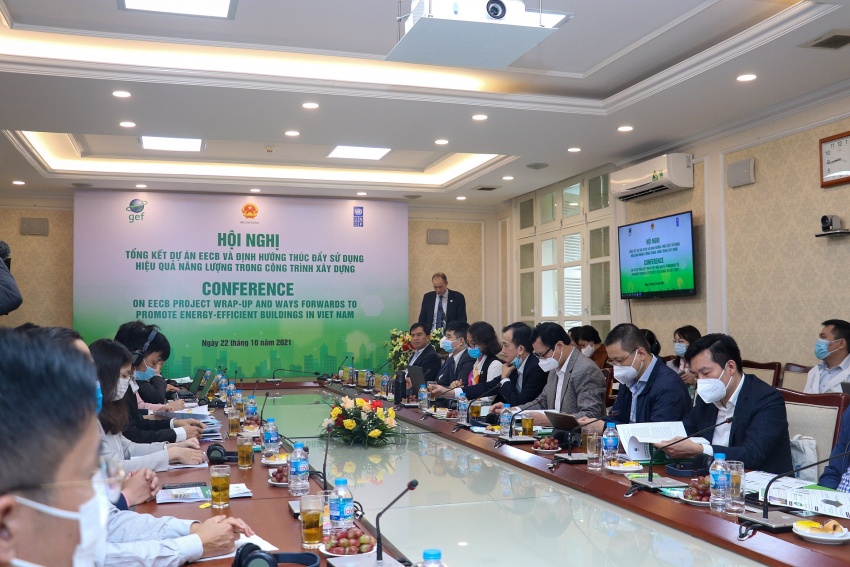Construction is an energy-intensive industry that accounts for about 35-40 per cent of the total national energy consumption, mainly electricity consumption. However, the industry has a great potential for energy efficiency. Energy use in buildings can be saved by 25 to 67 per cent, which will help reduce building operating costs and CO2 emissions and bring about environmental benefits and improve the quality of life.
 |
| The energy-efficiency conference was co-organised by the UNDP and the Ministry of Construction |
The development and promotion of energy-efficient buildings in Vietnam, supported by the Global Environmental Facility (GEF) through the UNDP, address energy-saving measures leading to direct greenhouse gas (GHG) mitigation of 73,035 tCO2.
The project provided policy review and technical inputs to the inclusion of energy-efficient and green buildings provision into the law on amending and supplementing of many articles of the Construction Law (June 2020) and a decree guiding the management of construction investment projects (Decree No.15/2011/ND-CP); five technical standards on energy-efficient properties of building materials, six technical standards on the methodology of the establishment of Specific Energy Consumption Profiles; one technical cost norm related to energy efficiency consultancy service costs and one roadmap on development of energy-efficient buildings in Vietnam, two databases on energy-efficient equipment and materials.
The project also provided technical support to 23 new and existing buildings with a total of 75 solutions applied, resulting in a savings of 12,000MWh (equivalent to 10,000 tCO2e reduction), corresponding to VND35 billion ($1.52 million). This also proved the economic and technical feasibility investment in energy efficiency solutions with averaged incremental cost of less than 3 per cent and a pay-back period of 3.5 years.
In his opening speech, Le Quang Hung, Deputy Minister of Construction, said, “The project brings about meaningful impacts in the construction industry in particular and contributes to the goal of reducing greenhouse gas emissions of Vietnam in general.”
He emphasised, “Results and lessons from 75 energy-saving solutions will be shared and further promoted.”
UNDP deputy resident representative in Vietnam, Patrick Haverman stated, “Energy-efficient and green buildings are essential for sustainable growth and green recovery efforts of the real estate sector. Retrofitting and economic recovery through energy-efficient and green construction could result in long-term cost savings and greenhouse gas emissions reduction while improving the well-being, health, and living and working environment of users.”
He highlighted some further actions that the government should consider to sustain the development of energy-efficient and green buildings, including (i) the formal establishment of building-specific energy consumption profiles, energy benchmarking, and energy-efficient building certification system in Vietnam; (ii) design of specific incentive schemes and innovative financing models to encourage the higher demand and supply of EE buildings; (iii) long-termed vision of private sector towards net-zero energy building by 2050 and (iv) continued public awareness-raising of the co-benefits in the form of health, environment, and reduced electricity bills to generate increased demand for energy-efficient and green buildings.
The EECB project aimed to reduce the intensity of greenhouse gas emissions from the building sector in Vietnam, by improving the energy utilisation performance of commercial and high-rise residential buildings in Ho Chi Minh City and Hanoi. It started in 2016 and ends this year.